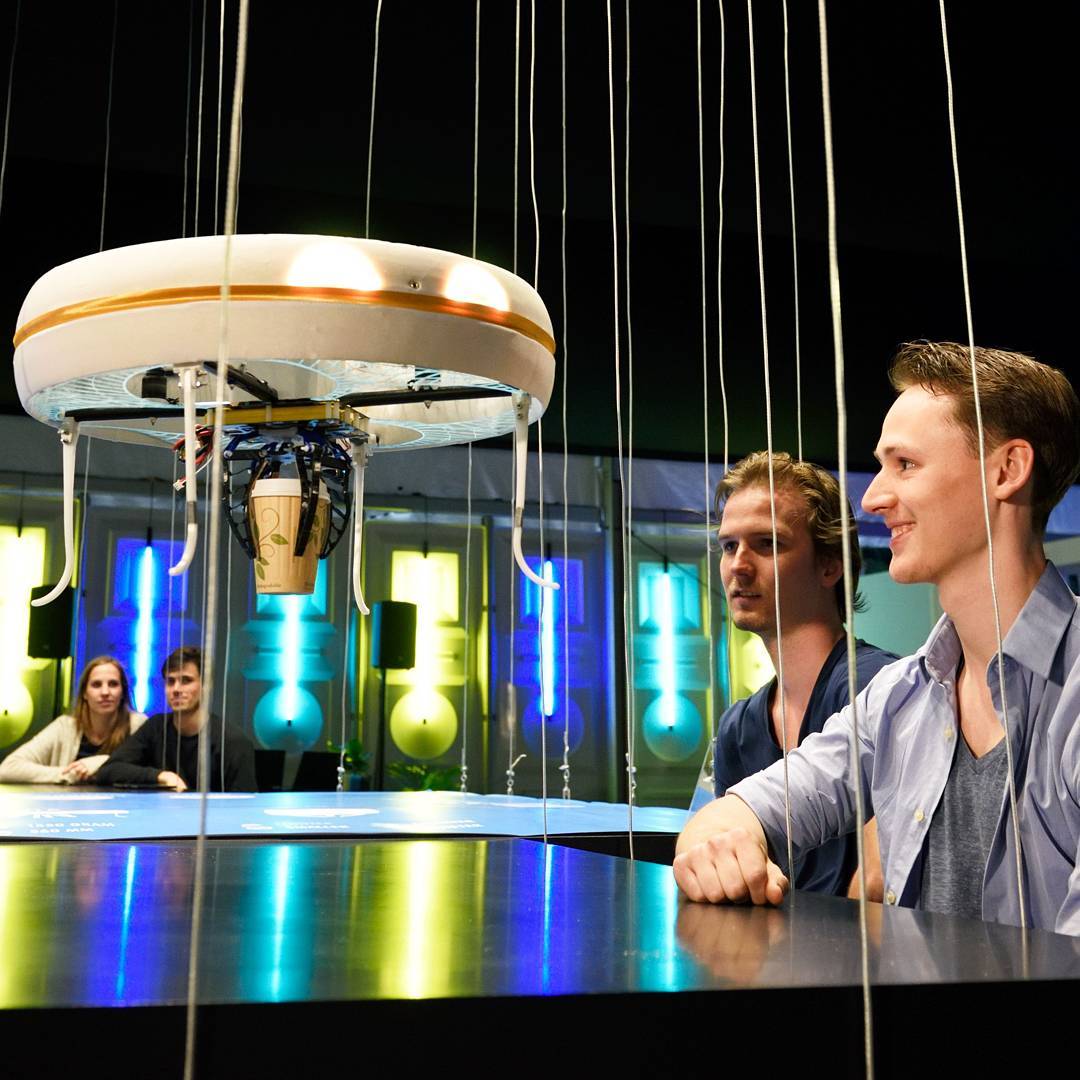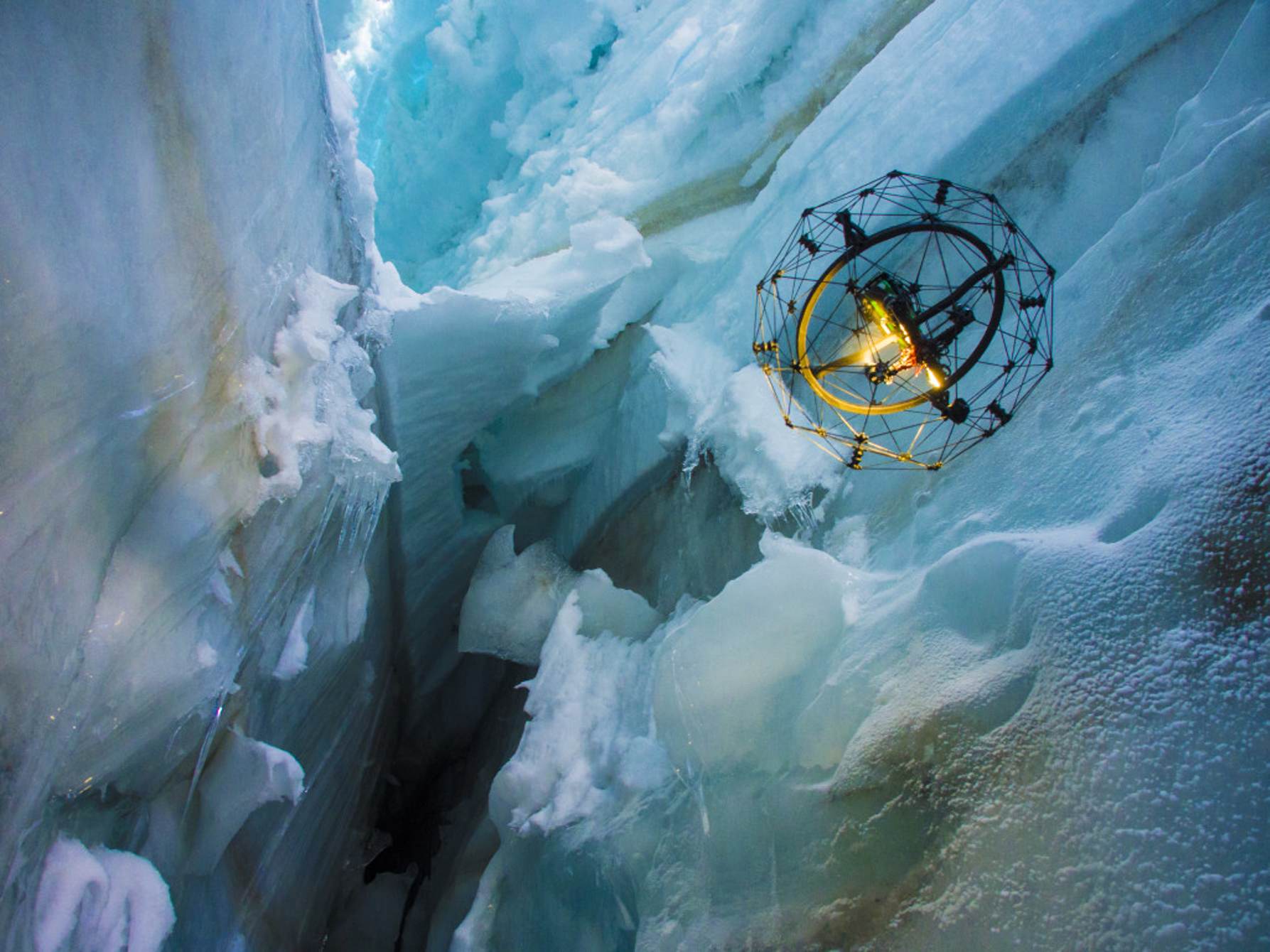For many people, drones have made aerial photography an accessible, exciting hobby which offers an easy way to capture incredible footage from up high. But that’s not all drones are capable of. From search and rescue to autonomous firework displays, here are five incredible drones that you probably didn’t know existed… (and now want).
Incredible Drones: The Blue Jay
The Blue Jay is a household drone that’s been designed and built by a group of students from the Eindhoven University of Technology, in the Netherlands.
The concept is pretty cool: A safe, smart, autonomous drone, capable of flying around a domestic environment, following instructions, and performing day-to-day tasks.

As well as being loaded with sensors to recognize and avoid obstacles, the Blue Jay’s propellers are completely covered, just in case it comes into contact with anything it shouldn’t. It’s also got a little claw to help it pick up and carry objects. The team recently demoed the drone in action, opening up a drone service café at the university.
Incredible Drones: The Gimball

We’ve all sat and watched, half impressed and half annoyed, as a fly buzzes around a room, constantly crashing into windows and walls and carrying on as if it doesn’t feel a thing. This bouncy, energetic robustness was what inspired the idea of the Gimball – a collision-resistant drone from Swiss company Flyability.
The Gimball isn’t programmed to do anything clever like avoid obstacles. Instead, it use them to its advantage. It has a spinning outer shell that allows it to bounce off walls and other objects – all without pushing the drone off course.
Incredible Drones: Killer Drone
Before you read on, we don’t recommend you try and recreate this at home. But that doesn’t stop it from being a cool drone adaptation. A group of filmmakers in Finland decided to attach a chainsaw to their drone with terrifying results. They then filmed as their creation swept through a field of innocent snowmen.
In reality, the invention was a parody designed to highlight the risks involved with using drones in public spaces, such as for delivery purposes. Whatever the motivation, #KillerDrone was fun while it lasted.
Incredible Drones: Spaxels
Spaxels, from Austrian tech company Ars Electronica, are effectively LED-equipped quadcopters. With enough computing power and adequate preparation, a swarm of them can be programmed to produce a dazzling light show, which the designers reckon will “open up an unprecedented new dimension of aesthetic expression.”

Spaxels came to prominence in a promotional campaign run by Intel, in which 100 drones were synchronized to a live orchestra, setting a world record in the process. The event remains the largest ever gathering of drones in synchronized flight. Words don’t really do it justice, so check out the video below.
Swarms of drones such as this could be the future of fireworks, as aerial displays are more versatile – not to mention much cooler!
Incredible Drones: FAROS
Finally, we have a drone that is perhaps a little less fun, but just as ingenious and potentially lifesaving. Scientists at the Korea Advanced Institute of Science and Technology have developed FAROS, a fireproof drone capable of searching burning buildings for people in need of help.
It looks fairly similar to your average quadcopter, but really this is a drone packed with gear to help firefighters when things get heated. FAROS’ four rotors are actually at the bottom of the drone, which allows it to (yes, really) stick to and climb along walls. Think of it as a flying spider.
With the help of a 2D laser scanner, an altimeter and an Inertia Measurement Unit, the FAROS drone can identify obstacles, work out a way past them and navigate through a blaze autonomously.
Handily for a drone expected to work in pretty hot environments, the FAROS is a lot more robust than you might imagine. In fact, it’s completely fireproof, with an outer shell made up of aramid fibers. An internal cooling system beneath this “skin” helps to keep the drone cool. FAROS’ creators have estimated that it could withstand temperatures above 1,800°F (about as hot as Mount Doom) for over 60 seconds. In that time, it’s hoped that FAROS can help detect people in need of assistance, or help guide firefighters safely to where they’re required.
